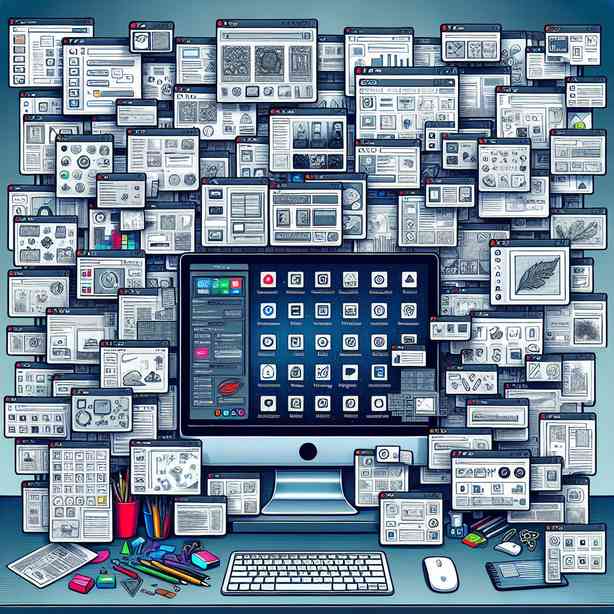
In today’s digital age, many of us find ourselves with cluttered desktops overflowing with countless screenshots. This phenomenon, while seemingly trivial, reveals deeper insights about our habits, workflows, and the pervasive influence of technology on our daily lives. As we explore the reasons behind this digital chaos, we will uncover not only the motivations that drive us to take so many screenshots but also how we can effectively manage and organize them for improved productivity.
Screenshots serve various purposes, playing a vital role in our communication, documentation, and creativity. For many, they’re an efficient way to capture fleeting moments, whether it be an interesting conversation, a captivating article, or a crucial piece of data. In fact, the ease of taking a screenshot on modern devices has transformed the way we create and share content. The intuitive nature of this function empowers users to preserve and access information instantaneously, making it an indispensable tool for both personal and professional use.
The growth of social media has further fueled the screenshot culture. Platforms such as Instagram and Twitter often lead to content worth sharing, prompting users to screenshot and circulate information quickly. This ability to capture significant moments enhances our online interactions, giving us the power to curate our experiences and share them seamlessly with others. However, this convenience can also lead to an unintentional accumulation of images on our desktops—a visual representation of our digital life that can become overwhelming if not managed properly.
One of the underlying reasons for the cluttered desktop is the procrastination that often accompanies our device usage. While we may have the best intentions to organize and store our screenshots in designated folders, the act of sorting through images can feel daunting. As a result, many users default to leaving screenshots on their desktops, intending to revisit and sort them later. This behavior creates a digital cycle of procrastination, leading to an ever-growing collection of files that become increasingly difficult to manage over time.
To combat this clutter, it’s essential to develop strategies for organizing your desktop and managing your screenshots effectively. First and foremost, consider setting a routine for reviewing your screenshots regularly. Allocating a specific time each week to go through your files can help you prioritize what’s important and delete unnecessary images. By establishing this habit, you can create order within the chaos, ultimately leading to a more streamlined desktop environment.
Another useful technique involves creating folders that categorize your screenshots based on their purpose. For example, you might set up folders for work-related screenshots, personal moments, or creative inspiration. Some individuals even organize images by project or topic. This organizational method not only simplifies retrieval when you need a particular screenshot but also creates a sense of accomplishment as your desktop becomes more orderly.
In addition to folder organization, leveraging cloud storage solutions can significantly alleviate desktop clutter. Services like Google Drive, Dropbox, or OneDrive allow you to store your screenshots online, freeing up valuable space on your local device. This approach not only helps you stay organized but also ensures that your files are accessible from various devices, enhancing your workflow and flexibility.
Furthermore, consider utilizing screenshot management applications. Several programs are designed specifically to help users manage screenshots efficiently. These tools often come with advanced features, such as tagging, search functions, and the ability to annotate images. By using these dedicated applications, you can streamline your screenshot workflow, making it easier to find and utilize the images you capture.
Another factor contributing to the phenomenon of overflowing desktops is the evolving nature of communication and information sharing in the workplace. In professional settings, screenshots often act as an efficient method for conveying ideas, providing feedback, and documenting processes. Team members may find it easier to capture their screens rather than draft lengthy emails or elaborate reports. While this practice enhances communication efficiency, it can also lead to a backlog of images that require sorting.
To mitigate this issue within a team context, establishing clear communication protocols can be beneficial. Encouraging team members to save screenshots directly to a shared folder rather than on individual desktops can foster better organization. Additionally, setting specific guidelines around the use of screenshots for documentation can help streamline the process and reduce clutter.
From a psychological perspective, the overwhelming number of screenshots on our desktops can also trigger feelings of anxiety and stress. The perpetual sight of a cluttered workspace can impede our focus and diminish our overall productivity. As such, addressing this issue is not merely a matter of aesthetics; it also contributes to our mental well-being. By fostering an organized digital environment, we can promote a clearer mindset, ultimately enhancing our creativity and efficiency.
In conclusion, the prevalence of screenshots on our desktops speaks to broader themes of communication, productivity, and organization in the digital age. While screenshots are undeniably useful tools that enrich our personal and professional lives, it is imperative to develop effective strategies for managing them. By establishing a routine for organizing and categorizing screenshots, utilizing cloud storage solutions, and implementing dedicated management applications, we can reclaim control over our digital spaces.
Ultimately, the key to transforming a chaotic desktop into a streamlined and productive environment lies in our habits and practices. By taking proactive steps to manage our screenshots, we not only improve our digital organization but also cultivate a healthier interaction with technology. As we navigate the complexities of the modern digital landscape, let us embrace the empowerment that comes with effective organization, fostering an environment that promotes clarity and productivity.


